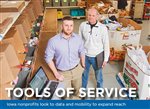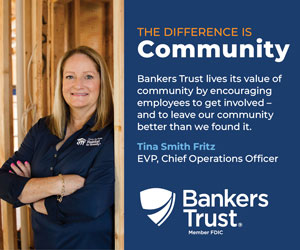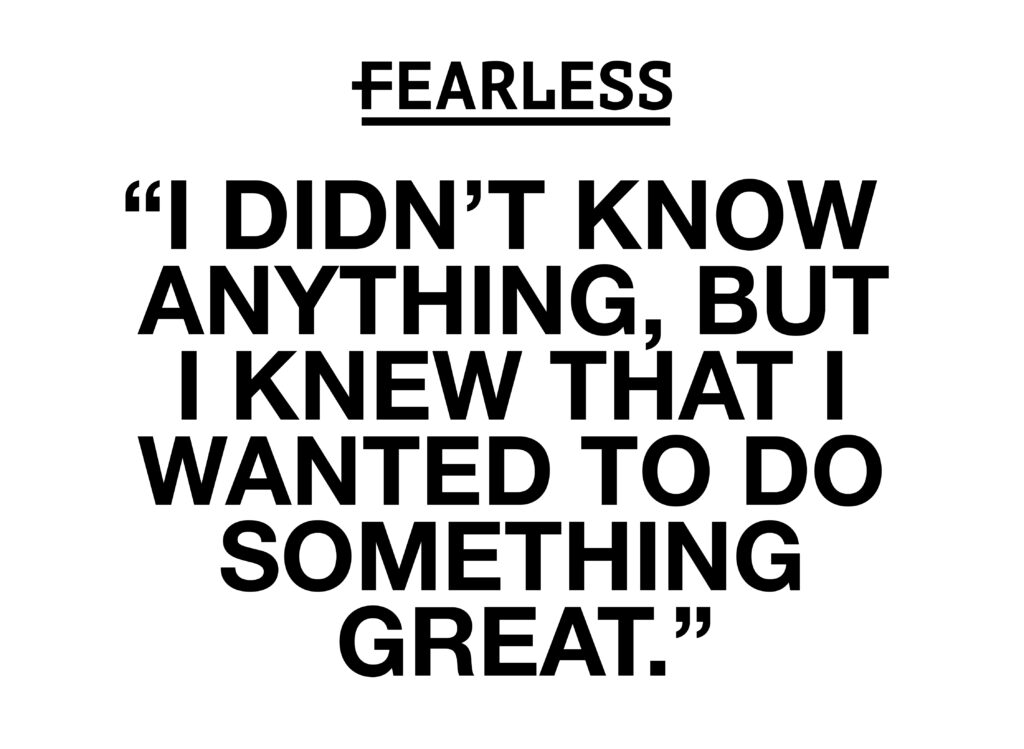Tools of service
Iowa nonprofits look to data and mobility to expand reach

KATE HAYDEN Feb 27, 2020 | 5:26 pm
6 min read time
1,537 wordsArts and Culture, Business Record Insider, Innovation and Entrepreneurship
The Des Moines Area Religious Council may be most known for its Food Pantry Network, and this year the food pantry saw a stark jump. DMARC had its busiest month of all time in November, when it served nearly 23,000 unique individuals in its food pantry network, capping off a steady rise in pantry use since 2012. Through the DMARC Data Dashboard, staff members watched the rise in real time.
“It has just been going up and up and up. We keep hoping we’re going to see some kind of plateau in total services, sort of like a natural ceiling in how many individuals we can actually serve in a given calendar month. Thus far, we just haven’t had it,” said Daniel Beck, DMARC data analyst.
After development led by Beck and DMARC volunteer Tom Fischer, DMARC’s Data Dashboard has been tracking client visits to 14 food pantries and 30 mobile food pantry locations per month across the metro since 2012. Thirty-six percent of the individuals DMARC served in 2019 were under age 18.
“One of the reasons why this data visualization dashboard is so impactful is that it’s trying to tear down those stereotypes. A lot of people would say, ‘Well, most people who are hungry, they must be homeless,’” said Leslie Garman, director of development and outreach at DMARC. “That’s absolutely not the truth, and this is one of the tools that we can use to show them.”
Nonprofits such as DMARC are finding new ways to reach supporters and staff in service. In five counties — Boone, Greene, Marshall, Story and Tama — Assault Care Center Extending Shelter & Support Services (ACCESS) found a way to connect distant staff who need to stay in close contact.
ACCESS serves victims of crime through four programs covering sexual abuse, domestic violence/intimate partner violence, homicide/violent crime and dedicated housing assistance.
Staff members Marcy Webb and Allegra Selzer work with survivors, starting in the hours after an assault, through the process of the justice system. Selzer, special populations outreach advocate for ACCESS, works with individuals who had serious mental illness, intellectual disability or physical disability affecting them before crime victimization occurred in their life.
“[We are] making sure those resources are connected and … educated on how to help someone who’s gone through this type of trauma,” Selzer said.
The biggest change in operations came when ACCESS was able to give each advocate an independent work cellphone, said Webb, sexual assault services coordinator.
Carrying work cellphones with each advocate changed where ACCESS advocates could meet their clients — instead of requiring a visit to an office, mobile advocacy programs have made ACCESS work more accessible to clients with disabilities.
“We would almost never go to a survivor’s residence to provide care. It was just sort of the model of them coming to us, or meeting with them at law enforcement or medical sites,” Webb said. “In some cases, especially cases of survivors with disabilities, it’s made a huge difference because they were just choosing not to access services that they had to come to.”
Mobile contact with other ACCESS advocates has kept the team more informed and connected to each other through the day — especially when team members monitoring the 24-hour crisis hotline must respond to a developing situation and pass hotline responsibilities to another advocate.
“The field we work in has a high rate of vicarious trauma, and it’s pretty intense work,” said Webb, referring to the secondary trauma that first-response counselors may experience. “When you have a small team of advocates and we’re all working in a different county on any given day … we rely a ton on email and texting.
“It does take a lot of intentional, professional coordination to make sure that all the care we provide is best practice. We work really hard at that.”
The same technology providing mobile access for advocates can put survivors at risk without their knowledge — and much of what ACCESS advocates do is help survivors understand their digital footprints. Advocates educate survivors on the location sharing settings in mobile apps and devices — most don’t know what app data is publicly viewable, including to the individuals who prey on them.
“A lot of the work we do is teaching survivors about technology in general, as a part of safety planning. Social media is so prevalent, but a lot of survivors come in not knowing a lot about boundary setting in general, not knowing what their rights are with technology, and not even knowing what options they have to keep themselves safe,” Webb said. “Maybe they’ve never learned how to disable a location, or maybe they’ve never really thought much about how to set boundaries with the information that they’re putting out into the world through social media.”
Using data real time
At DMARC, the organization consensually registers client information when the client first visits a partner food pantry as a way to to track trends in need and services across the Des Moines metro.
Between 100 and 150 DMARC staff members and volunteers are trained in the intake system, which registers as much information about new clients’ addresses, employment status, food assistance status and demographics as the client provides — although DMARC will not ask about immigration or citizenship status to avoid scaring clients who would otherwise use pantry services.
About 1% of the individuals served don’t provide a home address and aren’t reflected in the visualization maps the DMARC Dashboard generates — on the software’s maps, blue dots representing households are staggered up to 200 meters off of a client’s true address for confidentiality.
DMARC is looking to partner with other organizations in Central Iowa as a way to add context to the dashboard. Currently, the organization partners with independent, data-affiliated pantries in the region, allowing partners in Dallas and Warren counties to use DMARC’s intake system when registering clients. In turn, DMARC is able to layer partner data over its map — bumping unique visitors served to 25,000 unique individuals in November.
DMARC’s grasp of the data gives the organization a stronger visualization of what happens when outside factors influence the food pantry’s service: In January 2019, DMARC saw service rates drop as SNAP benefit recipients received two months of SNAP funds at once just before the federal government shut down for 35 days, the longest U.S. government shutdown in history. Service then spiked dramatically in February, which traditionally is a slower month for DMARC’s pantries.
That means the next time a federal government shutdown is expected, DMARC will know to amplify fundraising calls to support more food — and the organization will have the data to prove it to potential donors, said Matt Unger, chief executive officer of DMARC.
“To be able to show exactly what happens when something changes with benefits … so often the response is, ‘Well, the nonprofit community will pick this up, they’ve got it taken care of,’” Unger said. “We try to have as many different ways to tell our story as we can, and this is a fairly powerful one that is pretty unique to us. There’s not a lot of pantries that are out there collecting this level of data.”
Privacy considerations
When it comes to earmarking online resources for ACCESS survivors, time is the limitation for advocates. There are plenty of applications and services out in the world that could theoretically assist a survivor in their recovery, but making sure the service is trauma-informed and appropriately private for users is necessary.
“Sleep is something that routinely is impacted by trauma, so it’s something we speak about with survivors. Wouldn’t it be great if I knew a couple of really good apps that I could recommend?” Webb said. “We want to make sure that these are victim-centered. There are situations where a company may advertise something as useful for sleep, but what it’s really doing is data-mining, which runs into that privacy concern with a lot of our survivors.”
Added Selzer: “If we’re vetting an app, we’re going to want to look at what are the permissions of the app required to use it, who is behind developing the app, what is the intention behind the developers.”
In DMARC’s case, because the data dashboard was developed for it, the organization has a lot of control over what they can ask from developers Beck and Fischer.
“We’re constantly developing new functions for it. The dream scenario is to be able to say this is our data on top of energy assistance data, on top of WIC [program], or we can look at more specific housing costs if we’re working with Polk County or the city of Des Moines,” Beck said. “That’s the future of this as we’ve talked about — how many data sets, how many different organizations can we work with and actually overlay real data on top of this.”
DMARC is limited right now in how the organization can make the dashboard publicly viewable, Unger said.
“If we can find a way to get past some of the privacy concerns in a way that we can make it a public-facing thing that is fully searchable, that would be ideal,” he added.











